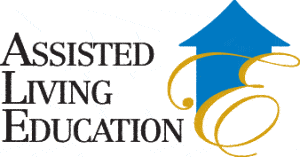Seasonal Affective Disorder (SAD)
Many of us are familiar with the term Seasonal Affective Disorder (SAD), but may not fully understand its condition, or even that there are different kinds of SAD.
Assisted Living Education discusses both types of SAD and also how to help our elderly residents diagnosed with this condition.
Symptoms
Seasonal Affective Disorder is a kind of depression whose onset is triggered by changes in seasons. The most common form of SAD occurs in fall through winter, but there are some cases in which the condition affects an individual in the spring/summer months. This is sometimes referred to as Reverse SAD.
In both cases, there is marked change in mood and disposition, which start out mildly when the season is in its initial stages, but become more severe as the season progresses. The fall/winter manifestation resembles the more classic symptoms of depression, but the spring/summer expression presents more like a manic depressive episode.
Fall/Winter SAD
- Irritability, trouble getting along with others
- Fatigue, lethargy, low energy
- Emotionally hypersensitive
- Change in appetite, especially craving for high carbohydrate foods
- Oversleeping
People who live in regions with distinctive weather changes or where sunlight can be very limited are more likely to develop symptoms SAD. However, even in places such as California where the weather may not change as dramatically, the cooler temperatures can prevent more frequent visits outside, especially for elderly residents, and therefore less exposure to sunlight.
The Effects of Reduced Sunlight
For individuals with Fall/Winter SAD, symptoms persist for more than two weeks. The reduced sun exposure can lead result in deficiencies or imbalances in the body. For example, serotonin production drops with a lack of sunlight, and this chemical imbalance causes an individual to feel depressed. The cravings for high carbohydrate foods are the body’s way of attempting to increase serotonin levels. Vitamin D also plays an important role in our health, including supporting bone health, preventatives with certain cancers & conditions, as well as help with incontinence. However, Vitamin D is also found naturally in certain foods and also via dietary supplements. Sleep patterns can also be thrown off as well, since the body’s circadian rhythms depend on regular sun exposure. The disrupted sleep prevents the resident from getting quality rest, which can result in depressive symptoms.
Spring/Summer SAD (also referred to as ‘Reverse SAD’)
Out of the entire U.S. population, 4%-6% of people are affected by SAD and of that population, about 10% experience a reverse of the winter symptoms.
- Depression
- Problems staying asleep, insomnia
- Poor appetite
- Agitation
- Anxiety
The cause of Reverse SAD is unknown but thought to possibly result from the excessive heat, or even too much light. Whereas fall/winter SAD sufferers are more lethargic and depressed, those with spring/summer SAD tend to be more agitated and angry. The manic type of behavior presents as irritability, agitation, and restlessness. Adults with Reverse SAD are more inclined to feel suicidal as a result of the agitated mood.
Treatments for SAD
For the period that the resident is suffering from SAD symptoms, antidepressants can be helpful, especially if the condition’s pattern is known. The antidepressant regimen can begin prior to the expected onset of either winter or summer SAD to be most effective.
Light therapy has been proven effective and useful for fall/winter SAD, especially for those who dislike taking medications or are already on multiple medications. Light therapy is also helpful for elderly who are not as able to go outside for natural exposure to light.
For residents with executive cognitive functioning within normal range, Cognitive Behavioral Therapy (CBT) is another possible treatment as well.
Residents suffering from Reverse SAD may also benefit from staying in cooler or air-conditioned environments during the warmer months, as well as avoiding rooms or areas that are too brightly lit. If residents are outside or are in areas that may be too bright, dark sunglasses can help, especially the wrap-around type that can block out light from all angles.
The resident’s attending or personal psychiatrist/psychologist can determine the best course of treatment, depending on the individual’s needs, cognitive capabilities, and severity of symptoms. Even if the resident is receiving specific treatment from their psychiatrist/psychologist, it is pertinent to keep all doctors, therapists, dieticians, and other caretakers abreast of any adjustments to the resident’s routines, medical or otherwise. This helps maintain consistency and effectiveness of the treatment and resident care.
Assisted Living Education is a premier provider in education, services, and licensing for the assisted living field. We specialize in RCFE education and licensing, continuing education, and other online coursework. Our instructors have years of industry and field experience, and bring their expert knowledge to the classroom with engaging and practical instruction techniques. Learn more by exploring our website or reaching out to us via our contact page. We look forward to hearing from you!



